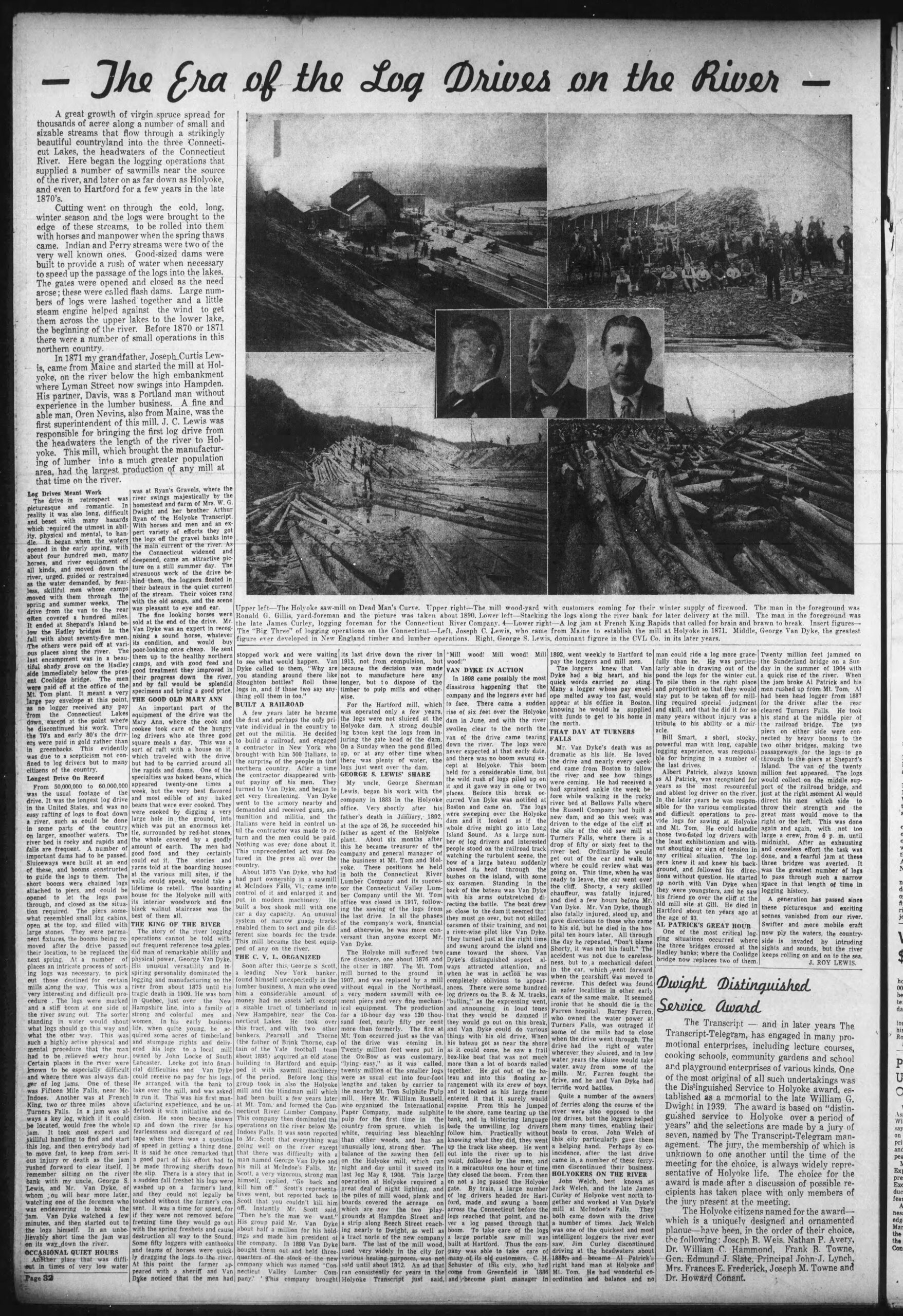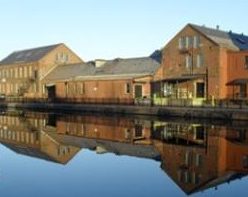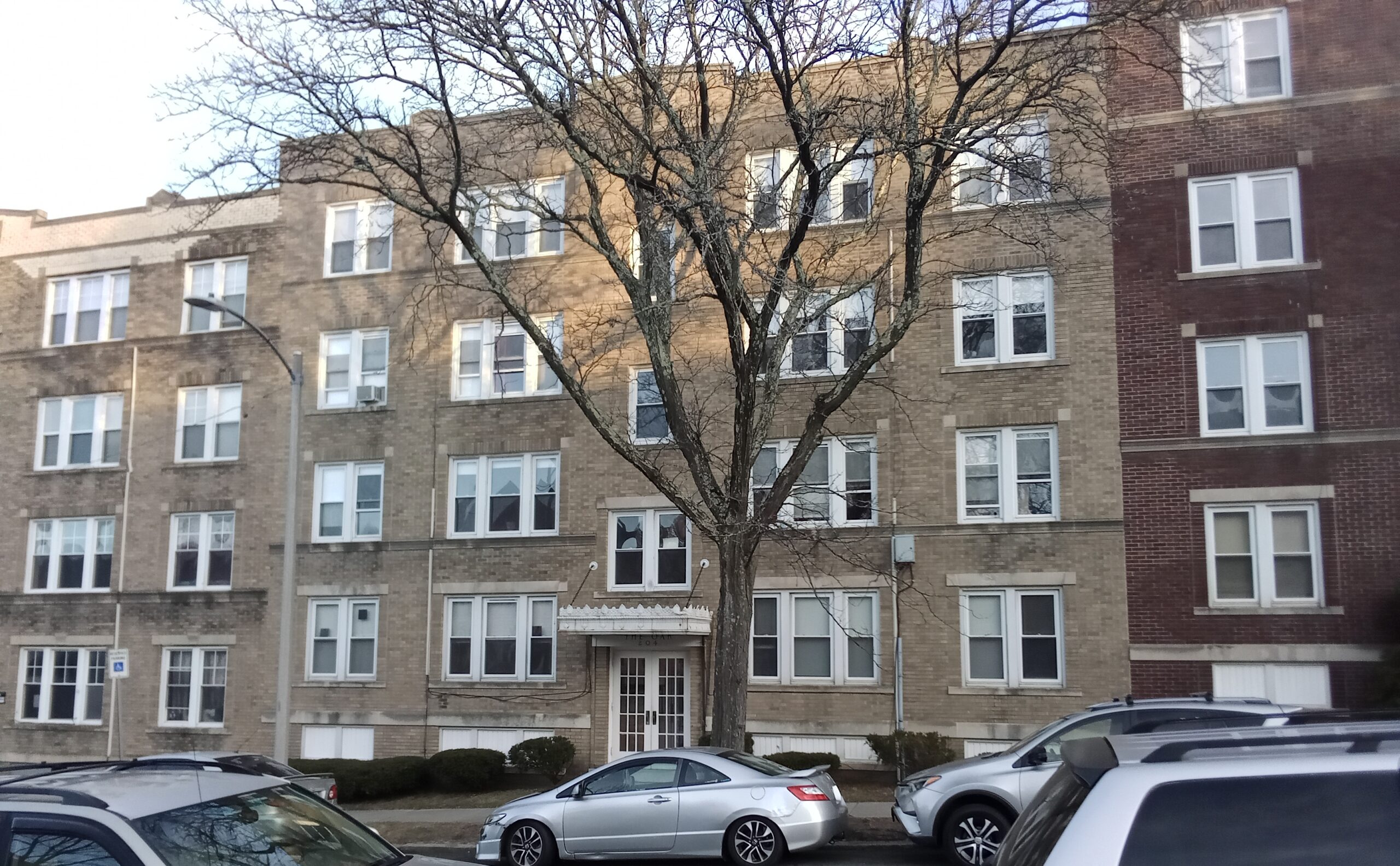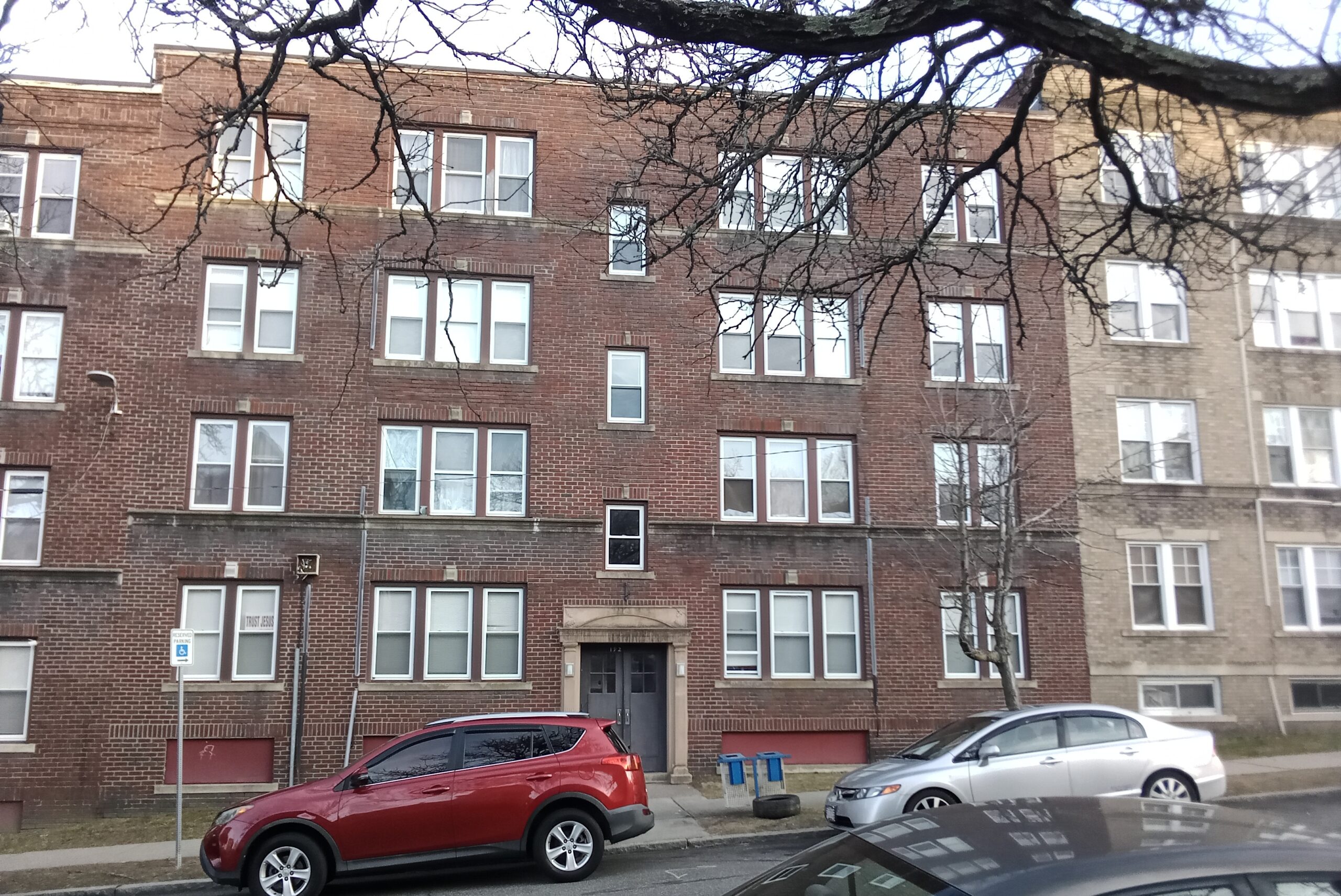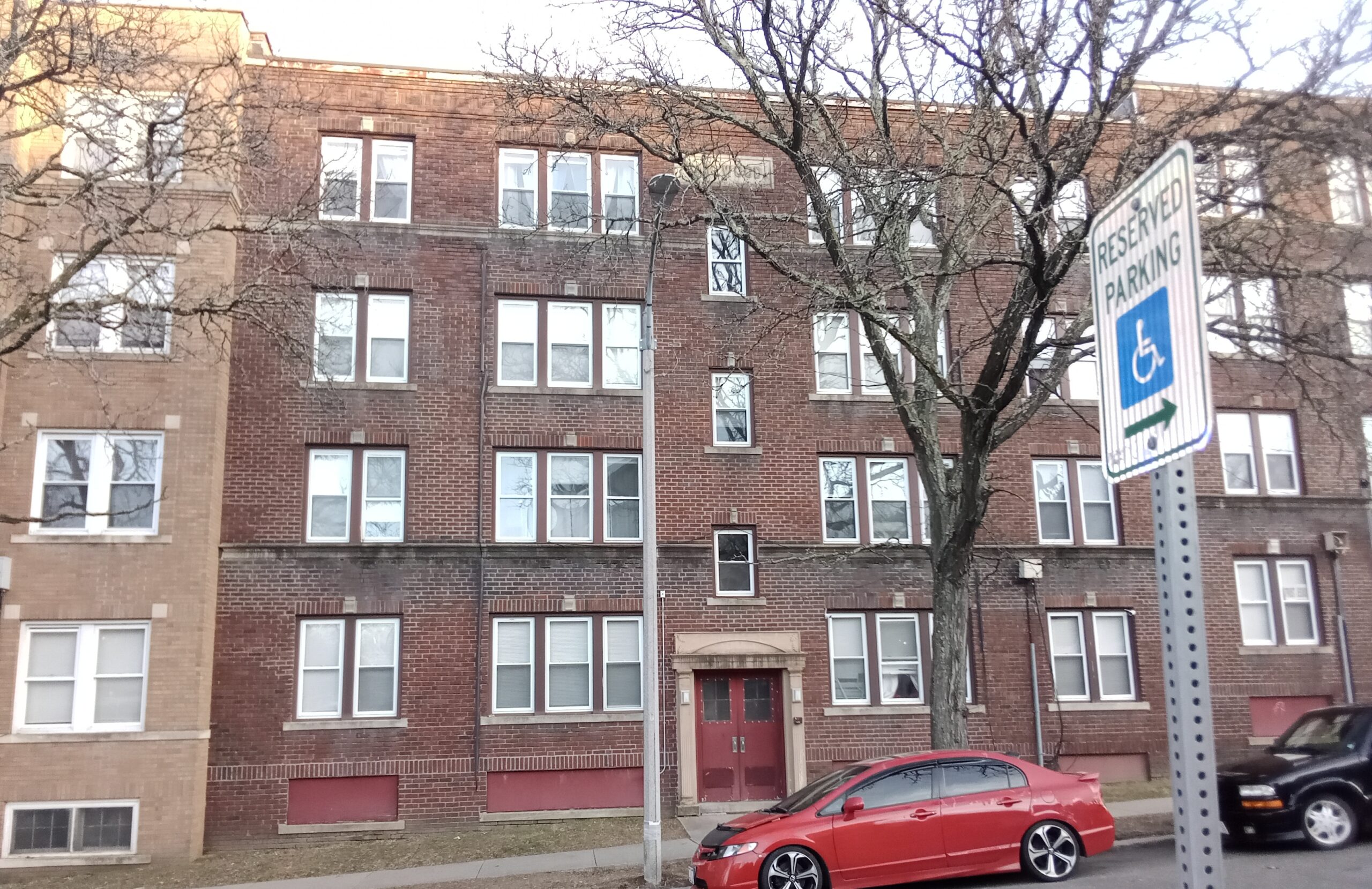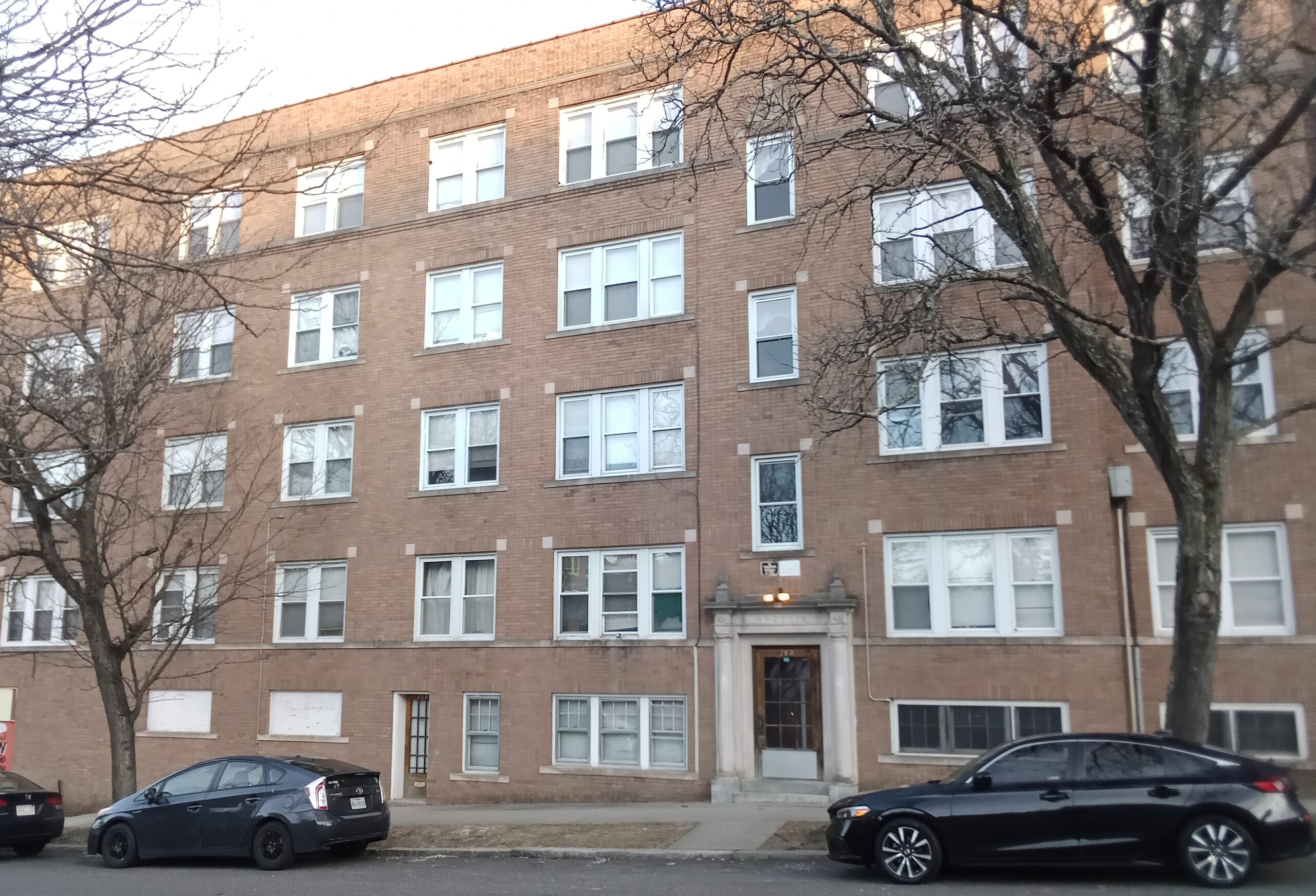Oak Street is filled with diverse sections. Park near Avery Field near Mitchell.
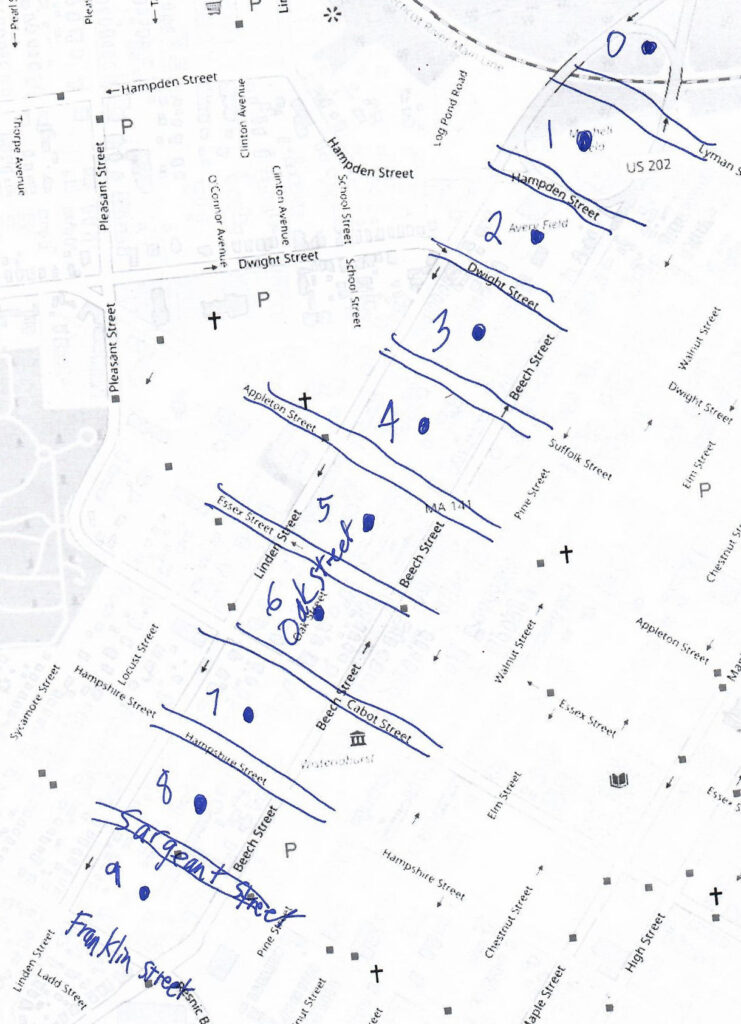
block 0 – Connecticut River Lumber Company
The Connecticut River Lumber Company owned the area from Avery to Mitchell to the river. They used Avery as a storage area. Mitchell was a staging and processing area. Just to the north of the parks was the processing area. Sweeping toward Log Cove was the area where logs were driven into. In 1909 Holyoke purchased this area and converted it into parks. Read a full length news article at the end of this page.
This area became Depression Beach during the 1930s and there was a hope to develop it more. Incredible STORY.
block 1 – Mitchell Field
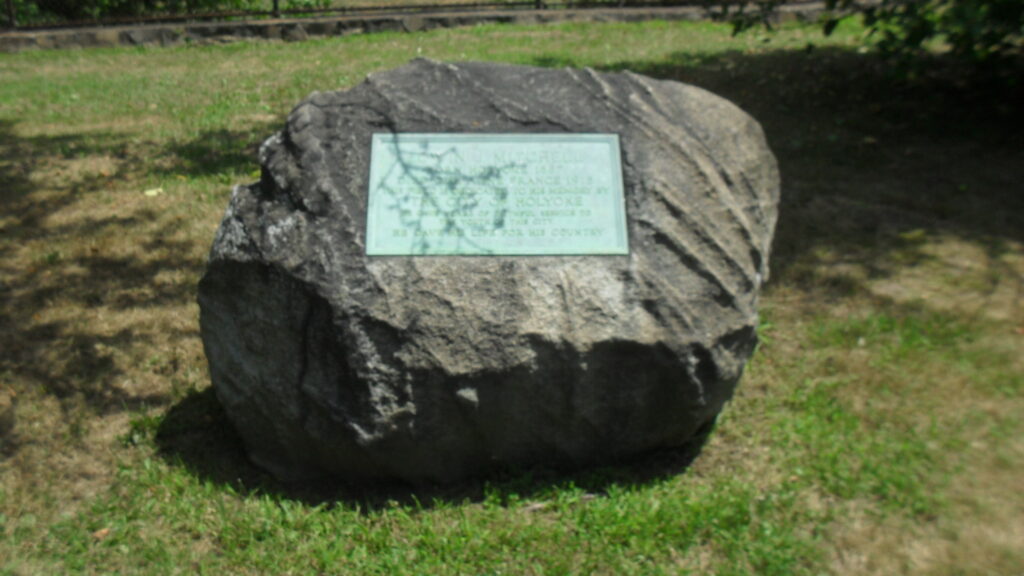
In 1914 the Prospect Athletic Field was graded and started as a city field. That is the backstop and the ballfield were made in that year. In 1929 the field was doubled in size when the northern section was purchased. Now with that land purchase Prospect Street cut it in two. Prospect Field was renamed in 1933 for Edwin Mitchell. Edwin Mitchell was a Holyoker that died in service during World War I. He was a strong advocate of recreation around the city. FINDAGRAVE
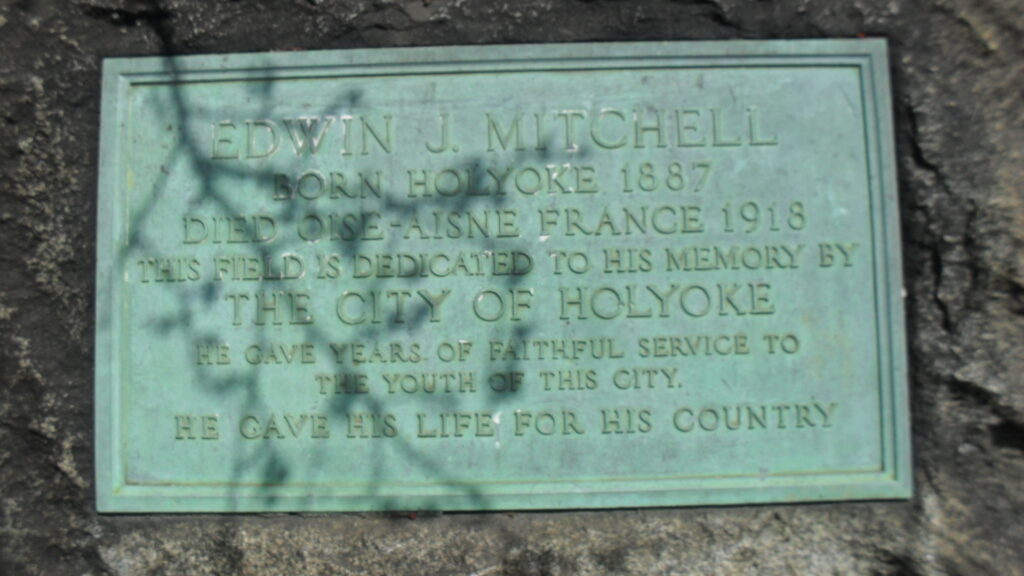
In 1935 a cement wall was built alongside the eastern edge of the field between it and the western edge of Beech Street. In 1941 a football field was added to the park. In 1954 the parkland between Mitchell and the river is opened up. From 1958 to 1961 the field is closed due to work on the Muller Bridge. The portion of the park near Beech and Hampden Streets is lost but the portion near Lyman Street is gained. In the fall of 1962 the field is opened once again. In 1964 the centerfield fence is raised 8 feet.
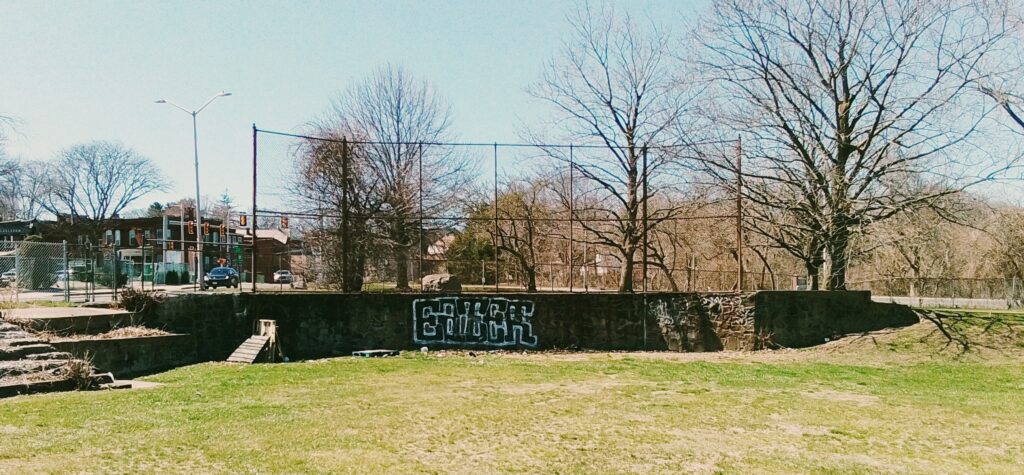
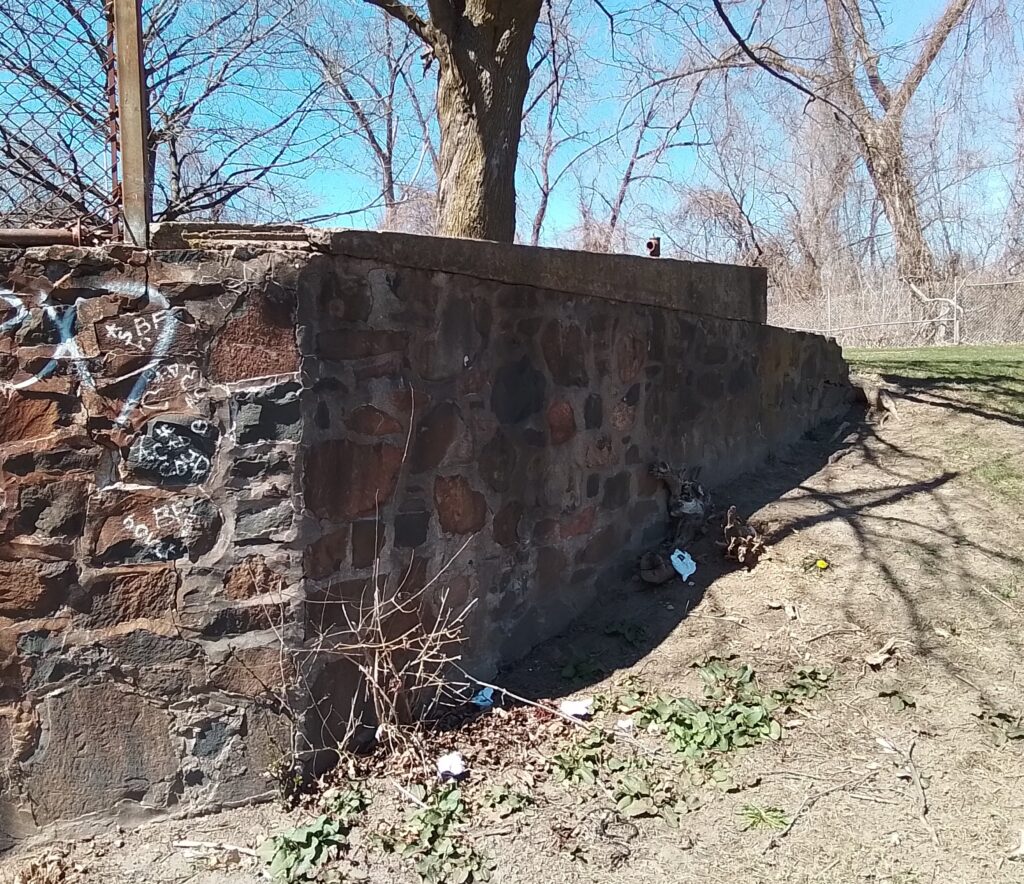
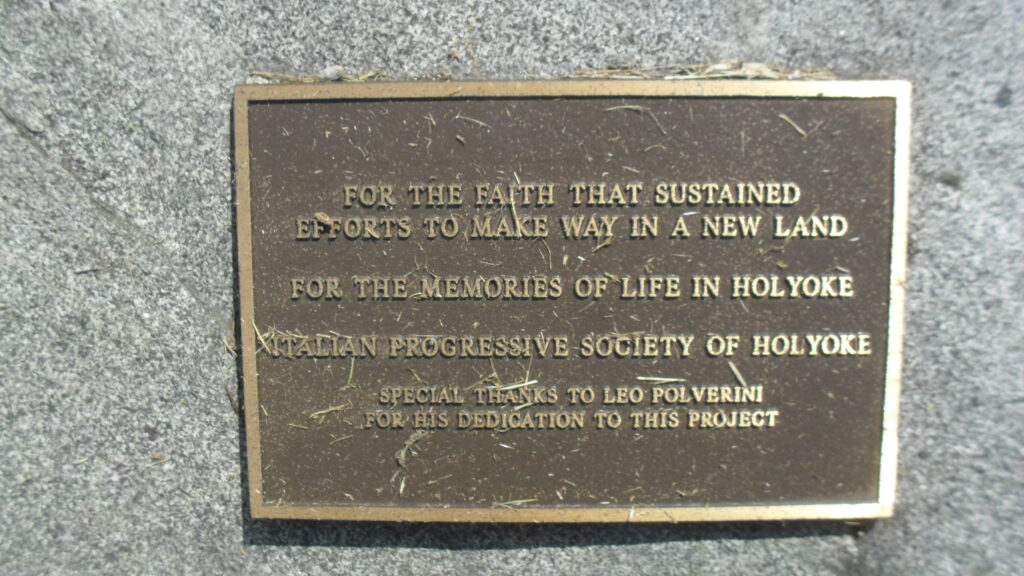
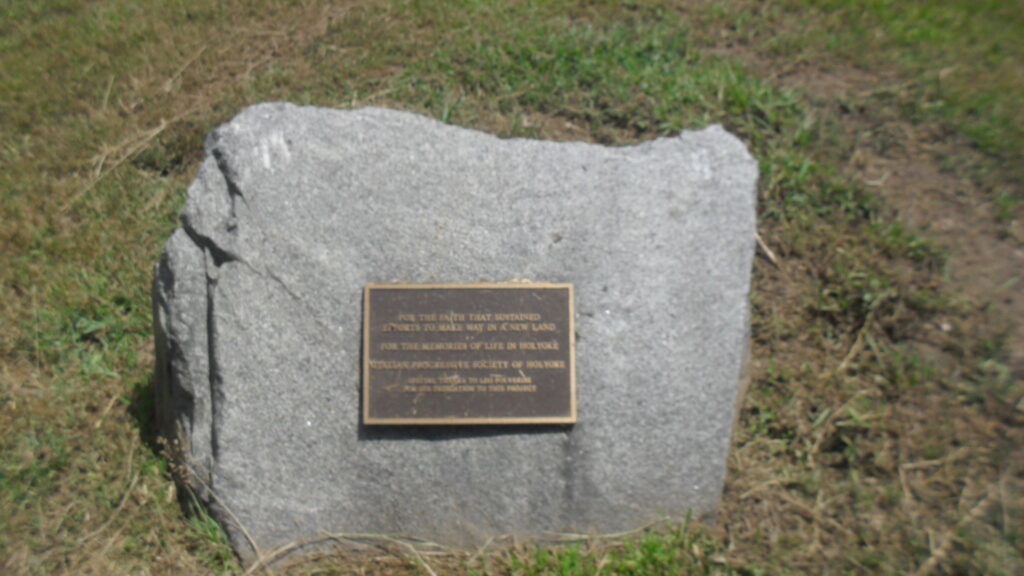
block 2 – Avery Field
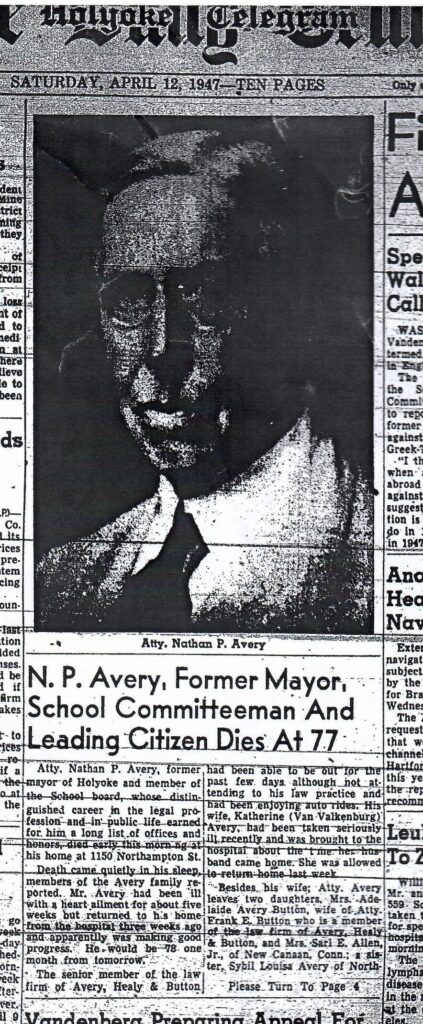
85 Beech Street at the northeast corner of Avery Field is the former gatekeeper house from the Holyoke Canal System.
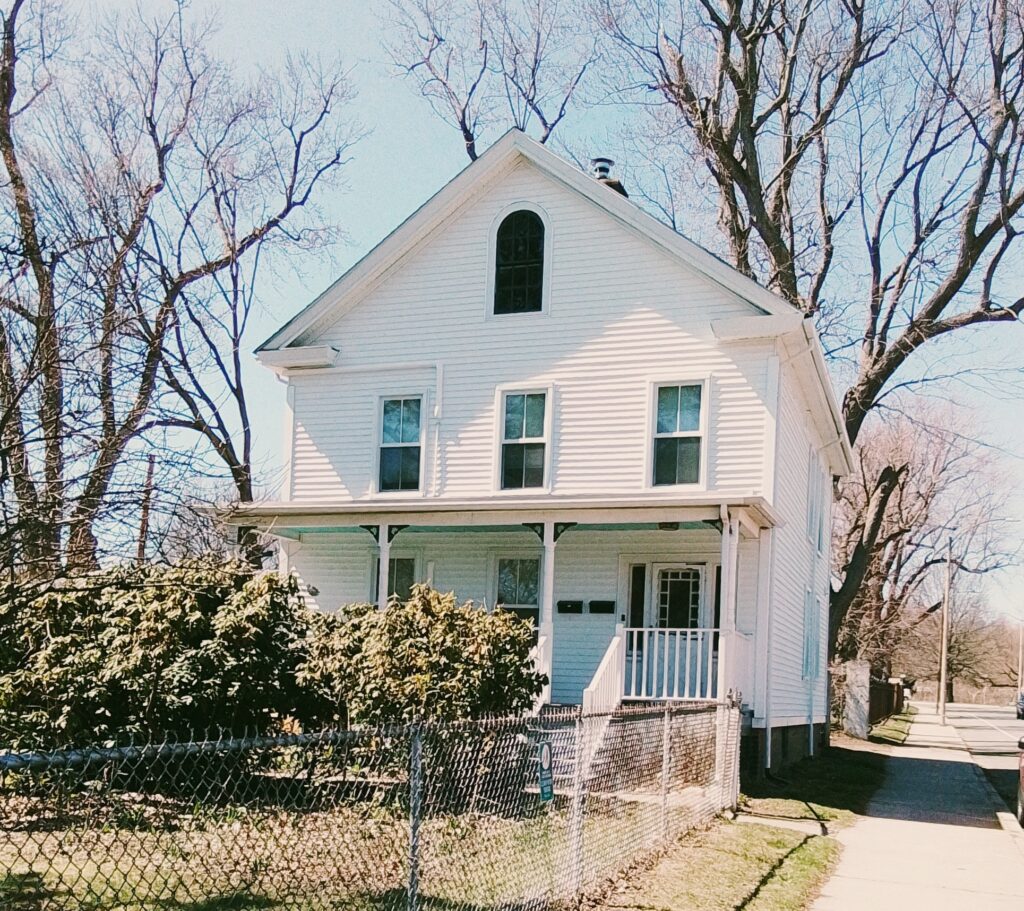
Hampden Playground was the original name of Avery Field. It was the first municipal playground in Massachusetts. Nathan Avery the mayor of Holyoke spearheaded the project this get this playground put in place. In 1908 Massachusetts passed a playground act and in August 1909 land for three parks was bought – Hampden, Maple, and West. During 1910 the park was made. Four feet of topsoil was added to the grading process. Trees were planted around the perimeter. The playground was in the SW corner. A basketball court and a baseball field were added. The park opened for good on May 5 1910.
Between 1910 to 1912 a wading pool was added along the eastern edge of the park. However by 1922 it was gone.
In 1916 the wrought iron fence that is at the ends of the park was put in place and then in 1917 the brownstone entrance pillars were put in place at both ends of the playground. In 1925 a few quoit courts were added to the park.
By the 1920s it is called Hampden Street Park.
The Nathan P Avery Wildflower Club was organized in the spring of 1927. The Holyoke Museum was started in the spring of 1927 at the Holyoke Public Library. When the museum started one of its many clubs was The Wild Flower Club. This club morphed into the Avery Club mentioned above.
Then in 1933 it was the field was renamed once again this time Avery Field after the former mayor and playground advocate Nathan Avery. His FINDAGRAVE honors him. He died in 1947. A good story is found about the park in the Holyoke newspaper of December 1 1945
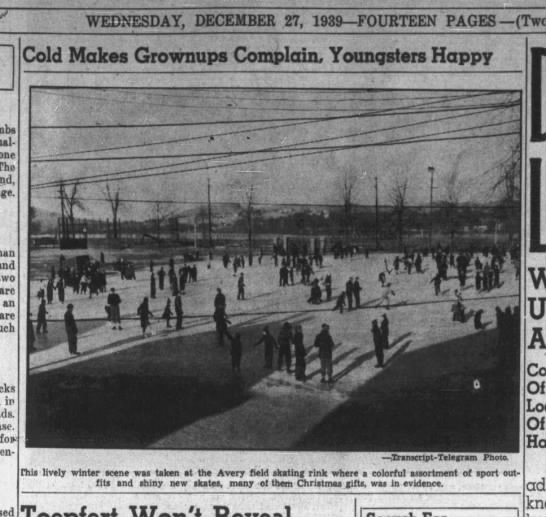
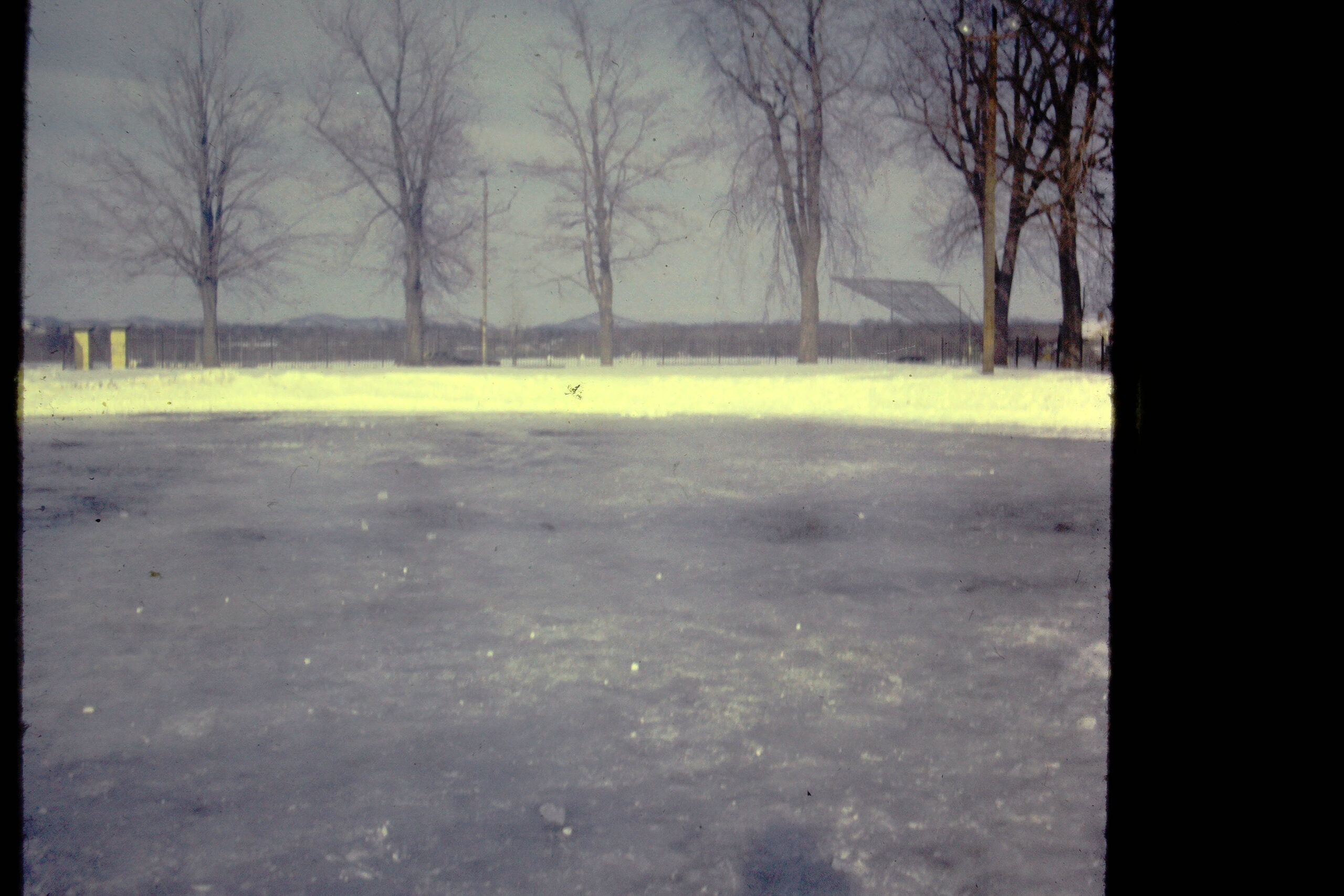
1939 was the first year of publication of the Avery Rattler was written on a weekly basis by the children of Avery.
In 1954 Avery received a new softball field. 1960 was the Golden Anniversary of the field. At speeches William Howes the chair of the parks department in 1910 was honored. Also Joseph Lee the father of the American Playground Movement is honored.
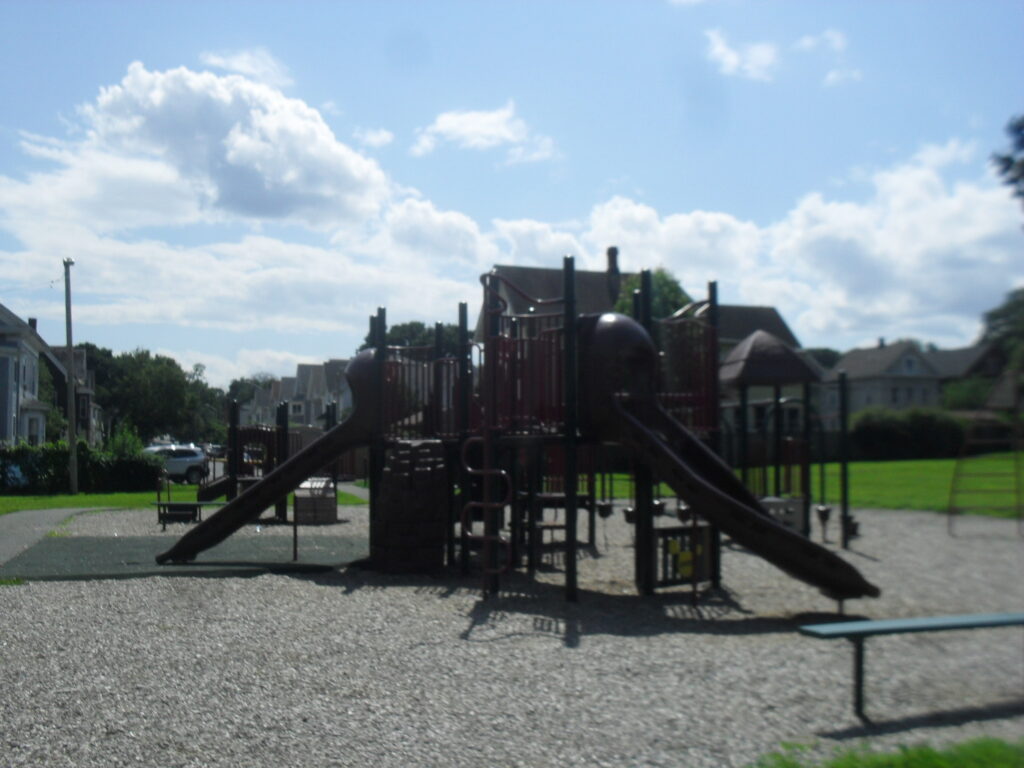
In 1967, there were 2 slides, 1 merry go round, 20 swings, and a playset.
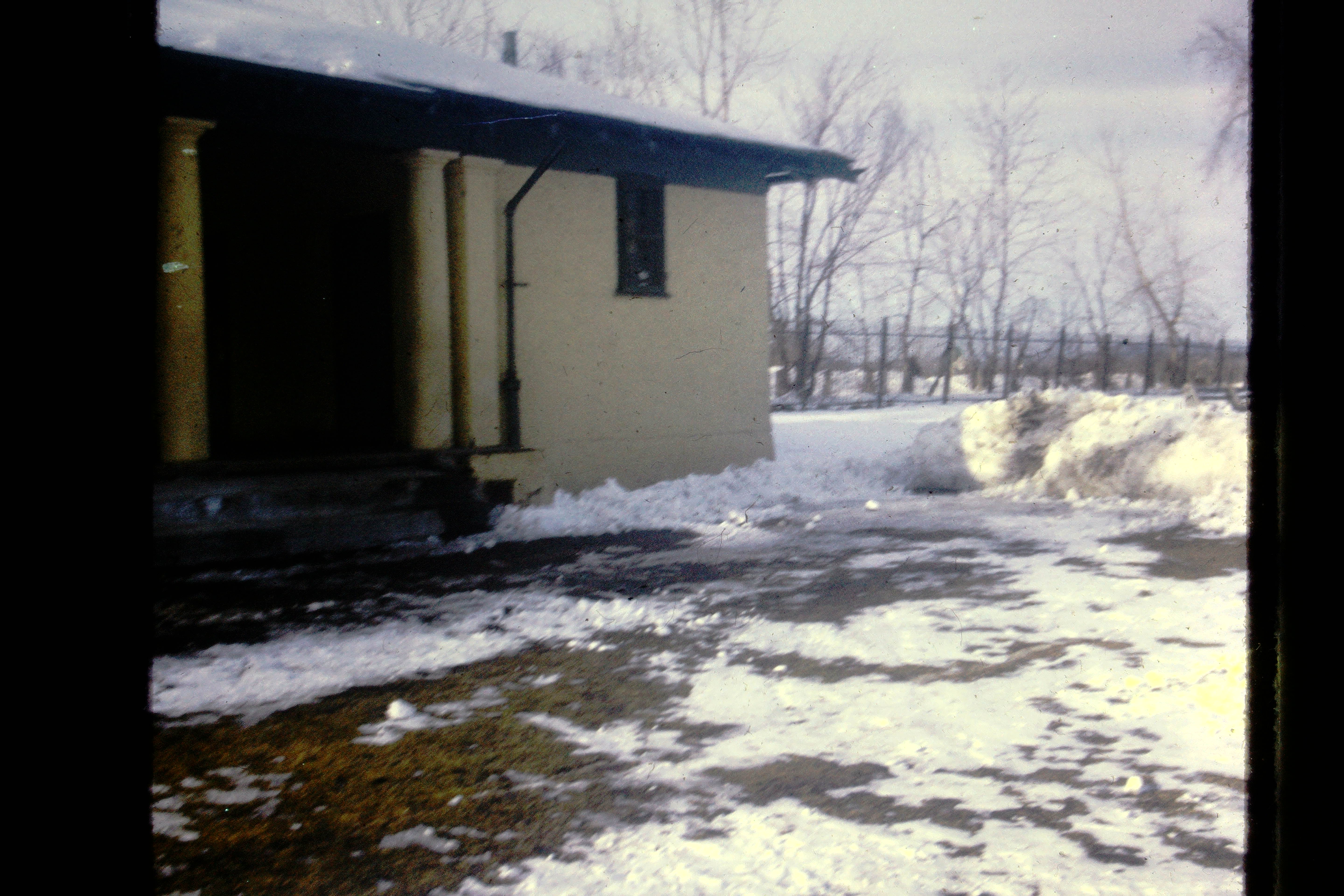
block 3 – Oak Street between Dwight and Suffolk Streets
The Dowling Double House at 219-229 Suffolk Street is the oldest structure in this section of the city. It was built in 1889 as a two family home. It replaced a conservatory.
block 4 – Oak Street between Suffolk and Appleton Streets
The Roslyn Apartments at 156 Oak was built in 1931. It is one of the few tenement houses on Oak Street.

This block was mostly taken up by Howland greenhouses from 1885 to 1930. They also were located where the Dowling Double House is. Howland was bought by George H Sinclair a florist and turned into greenhouses. The Sinclair Greenhouses were here for a long time. Even in 1911 he called them the Howland’s Hothouses so I do not know when the change in name was.
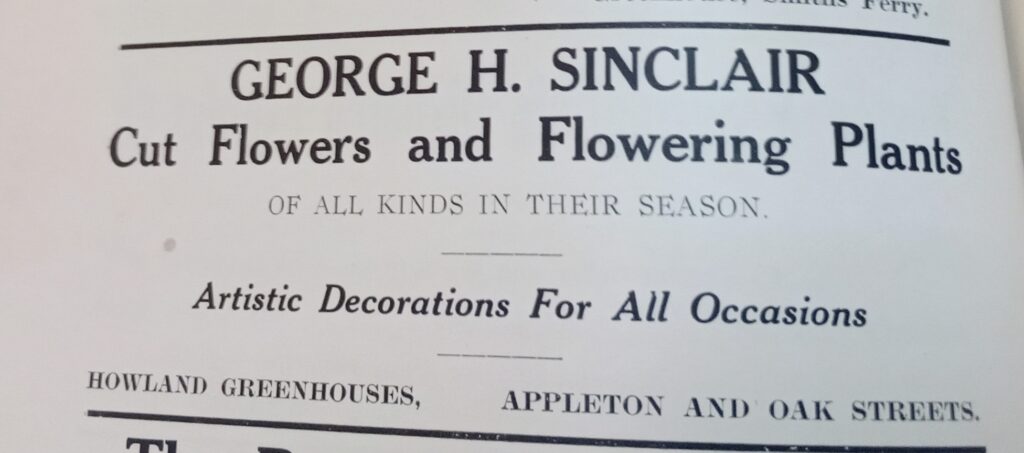
He was a great supporters of the parks of Holyoke and also donated many flowers. He lived at this address too. At some point you moved his firm Sinclair the Florist along with his residence out to Smith’s Ferry. Viola Sinclair would continue the business into at least the 1960s.
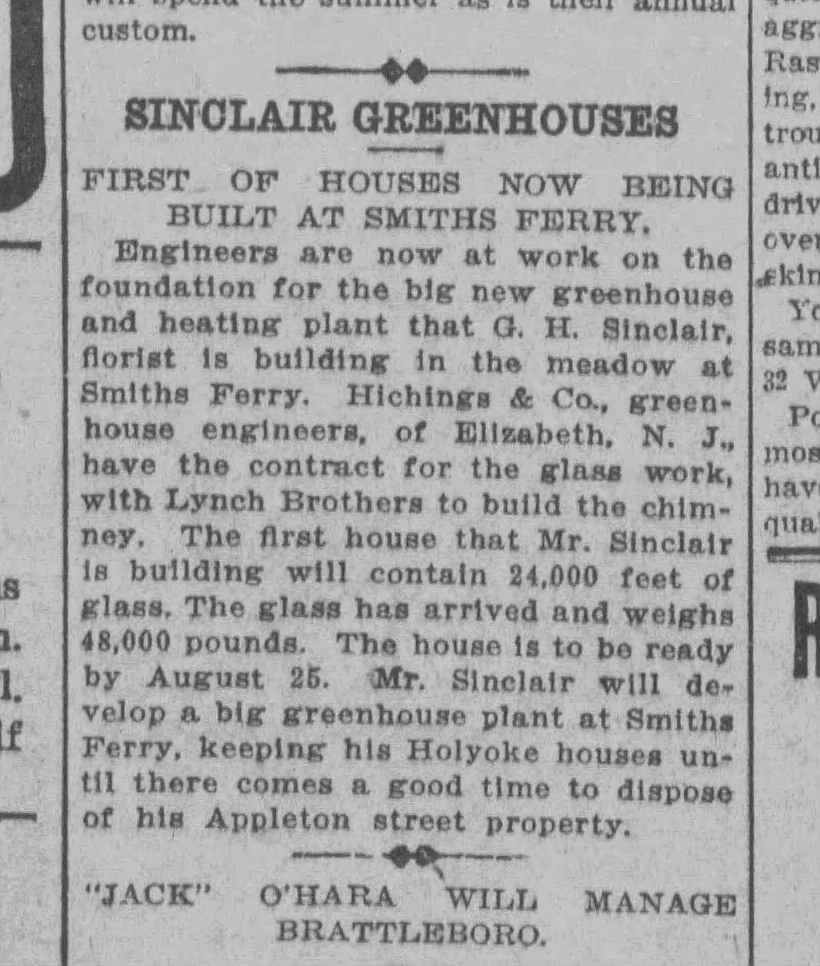
block 5 – Oak Street between Appleton and Essex Streets
Here along the eastern edge of the city block, there is a line of apartments. As you look at them from right to left they are the Ideal, Oak, Oak Center (two buildings), Oakhill, Oakwood, and Arzelia (two buildings). Across Oak Street from the Arzelia is the Odell and across Appleton Street from the Odell is the Virginia. One location of interest is 201 Oak which in 1982 was called the Sisters of Providence Epiphany House.
block 6 – Oak Street between Essex and Cabot Streets
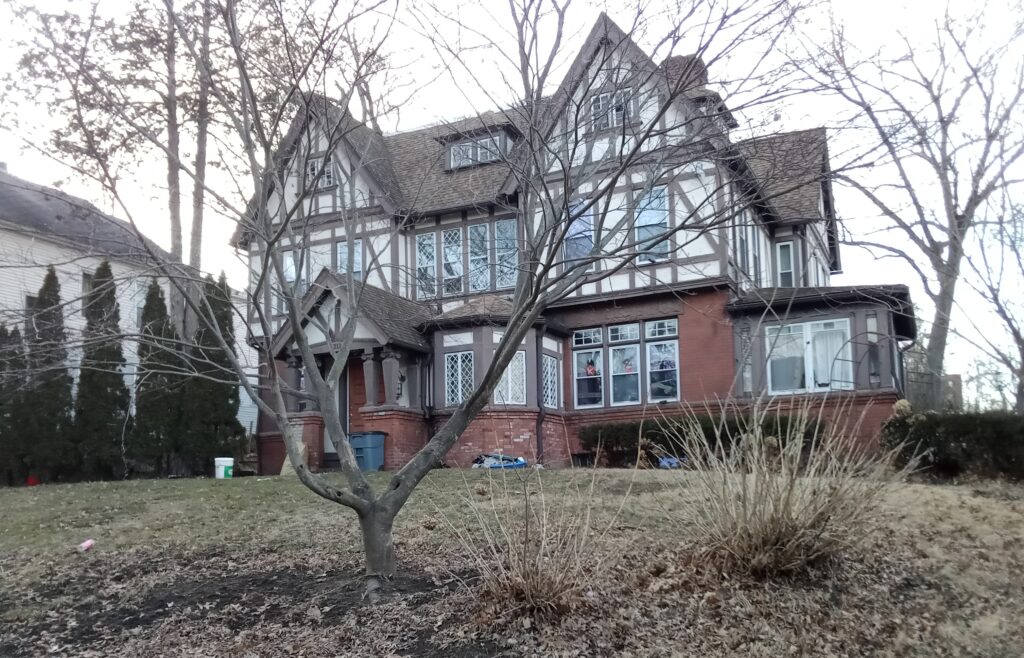
211 Oak Street (at the SW corner of Essex and Oak) is the home of Arthur Chapin from 1897 to 1905. From 1905 to 1945 it was the Judd home. William Judd was the president of both Carew Paper and Hampshire Paper both in South Hadley. It is built in the Tudor Revival style.
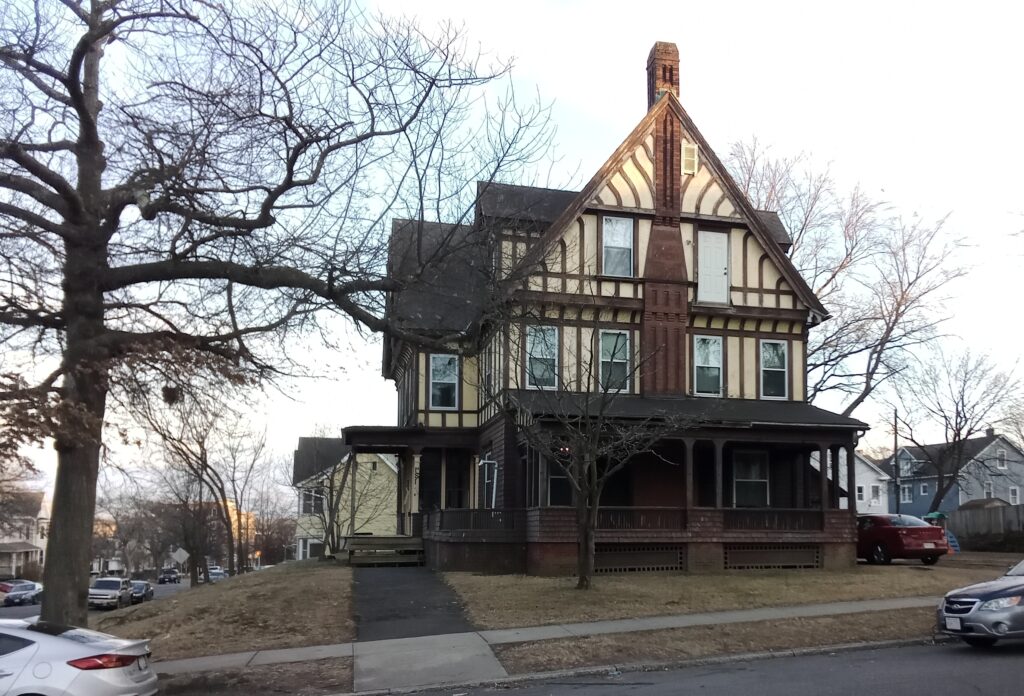
Tyner was the founder of the Holyoke Envelope Company in 1879.
The Louis Strauss house at 216 Oak Street was built in 1911 and is another Tudor Revival style home.
Second Baptist Church Parsonage is at 235 Oak. It was built in 1899 and was used as their parsonage until past the 1940s. Milan Warner IMAGE
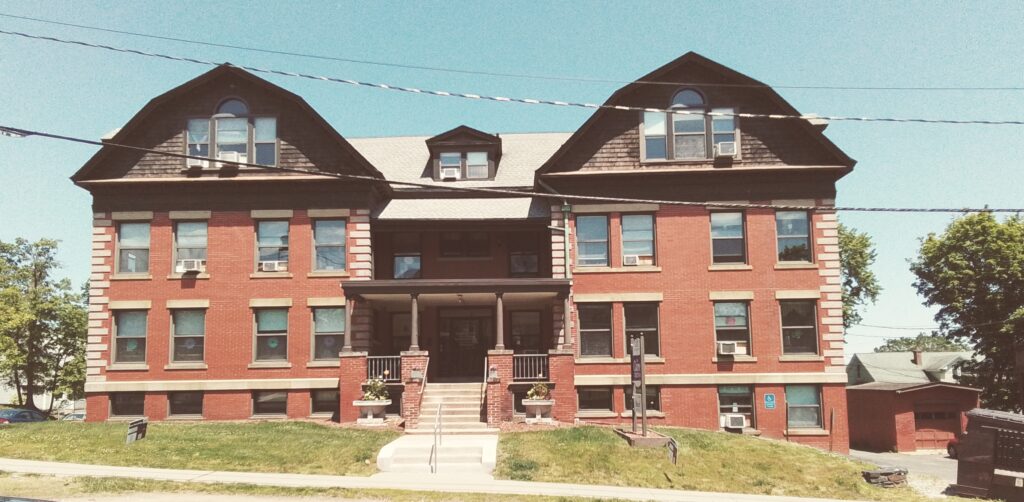
The Nautilus Building at 245 Cabot is a gorgeous building. This was the home of a magazine called the Nautilus. Published from 1899 until 1953, it was a monthly new thought magazine. You would expect a high degree of symmetry in such a building and it does come very close. Notice though the fenestration at left compare to at right. The architect was trying to hide something in 1911. There is an 1886 Victorian home below the left side of the house and then they had limited space to the right so they moved some elements in closer. This is on the Oak Street tour since the address of the house underneath was 242 Oak Street and thus the front door faced to Oak. The 242 Oak home was made by the Charles and Etta Richards family (left it in 1905). In 1906 Mrs William Towne would buy the house.
block 7 – Oak Street between Cabot and Hampshire Streets
Leslie White made Fairmount Square starting in 1885. Fairmount Square ran from Cabot to Hampshire Streets. Notice the curbing at all four corners of the intersection of Cabot and Oak. They are rounded. This also occurs at two corners of Hampshire and Oak. These are the only locations in Holyoke where streets that meet at right angles are with rounded curbing.
| Oak | 1880s owner | job | 1916 owner | image | built |
| 243 | Isaac Montague | Montague and Adams Clothiers at 237 High | Isaac Montague | 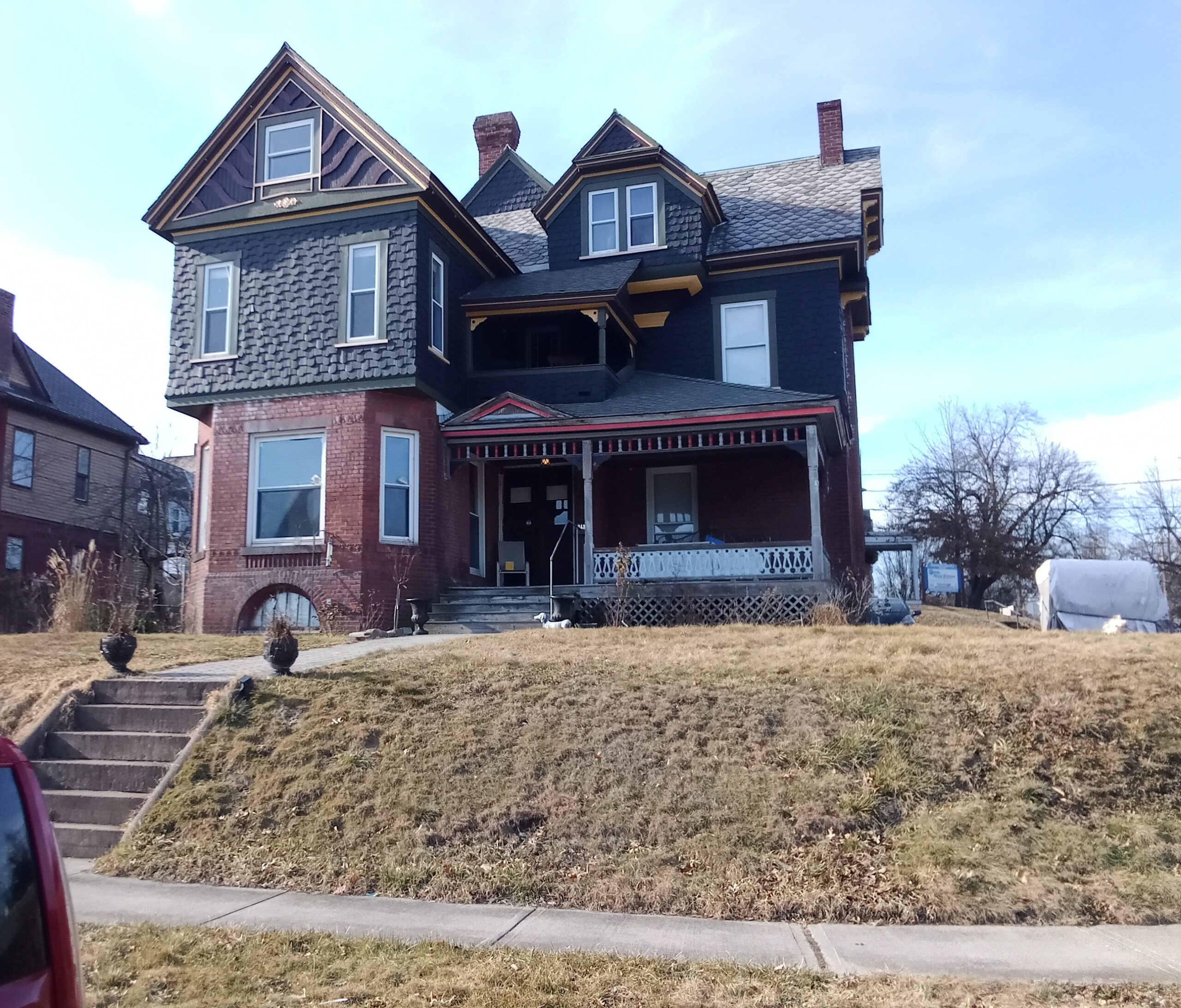 | 1887 |
| 245 | Chloe Evans or Maria Outterson | Eliza Newton (dies July 4 1945) | 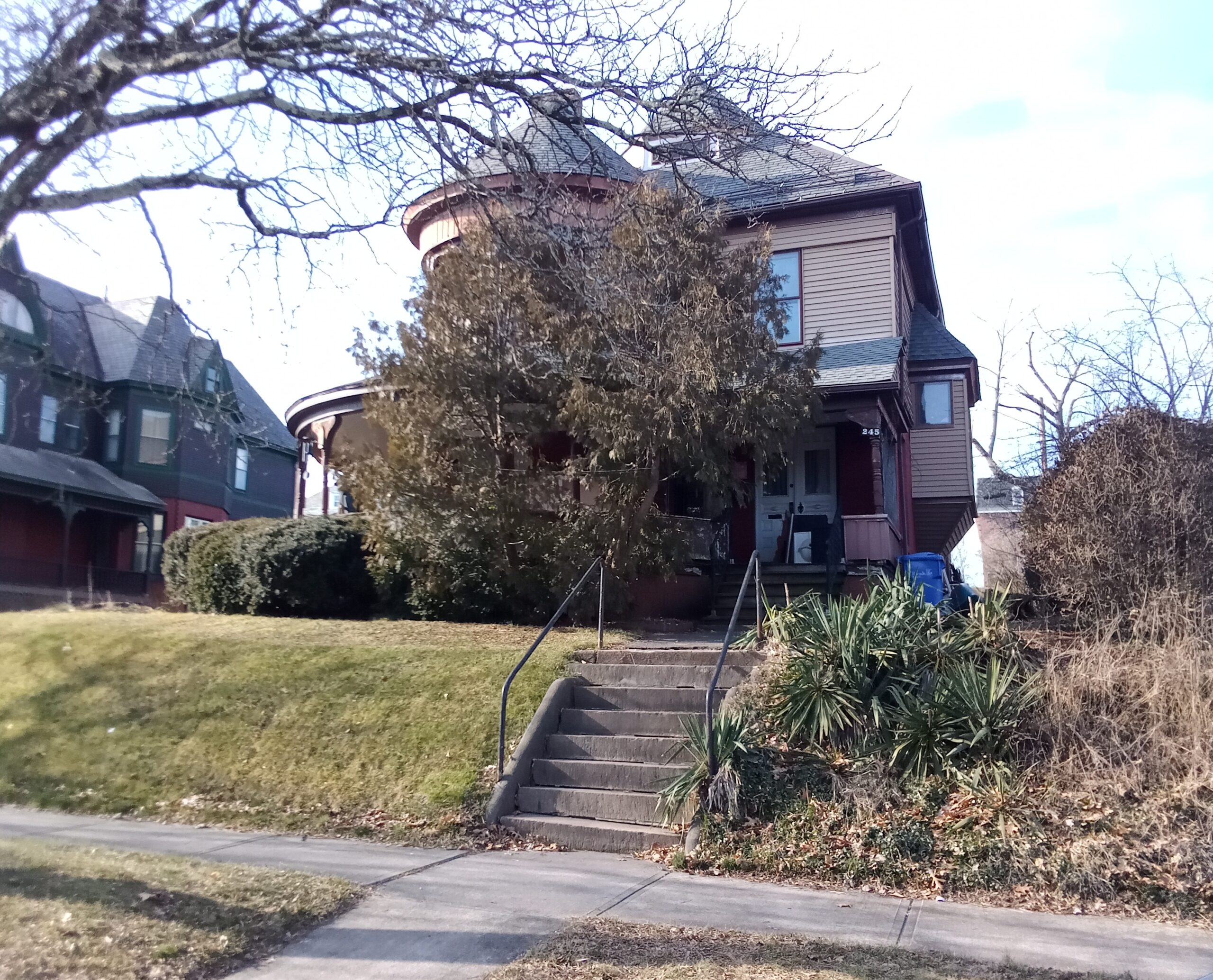 | ||
| 247 | Louise Gallup | Gallup Clothing Store on High Street | Augustus Gallup | 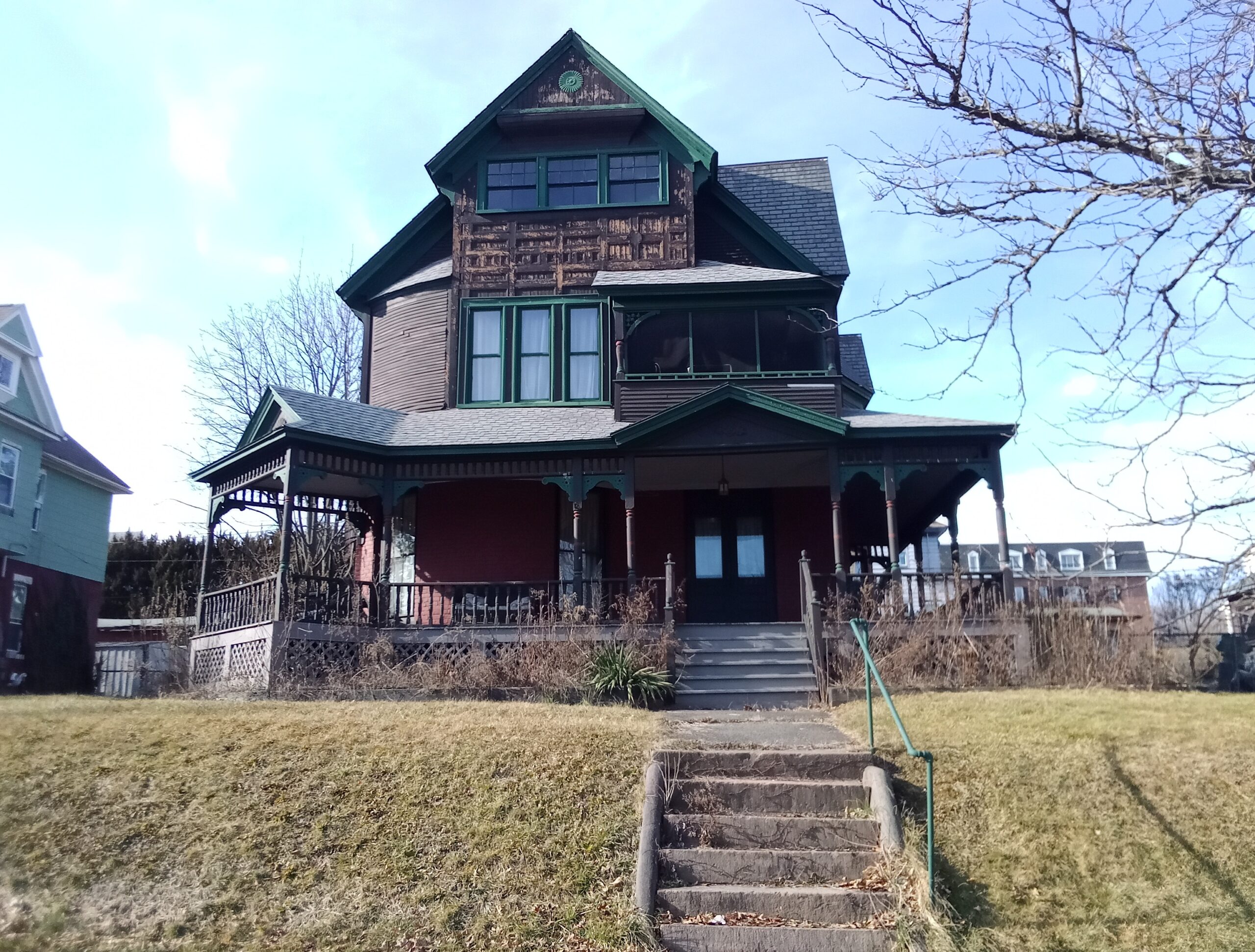 | |
| 249 | Lewis Hayward | Sydney Whiting | 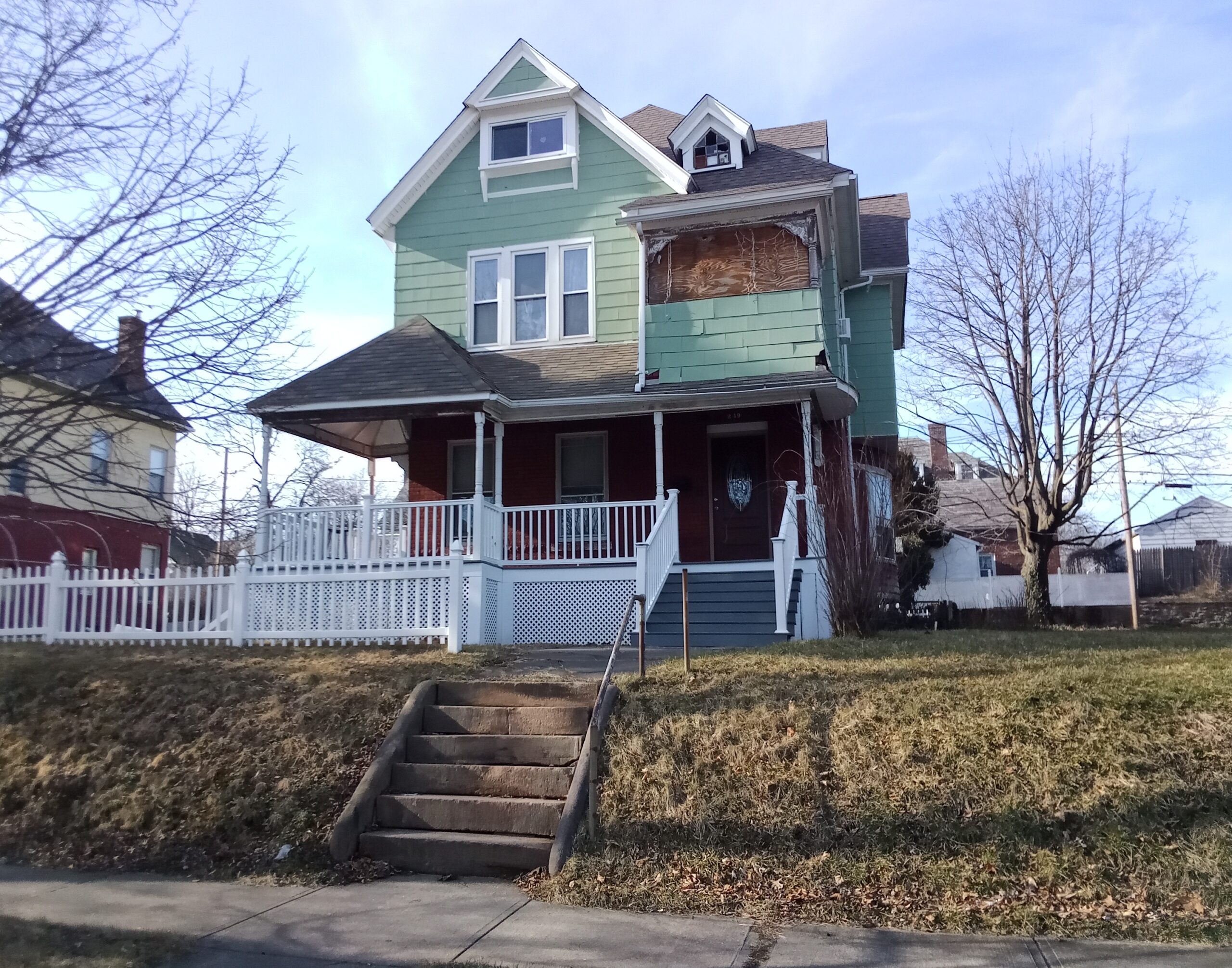 | ||
| 251 | Alice Hemingway | Charles Hemingway | 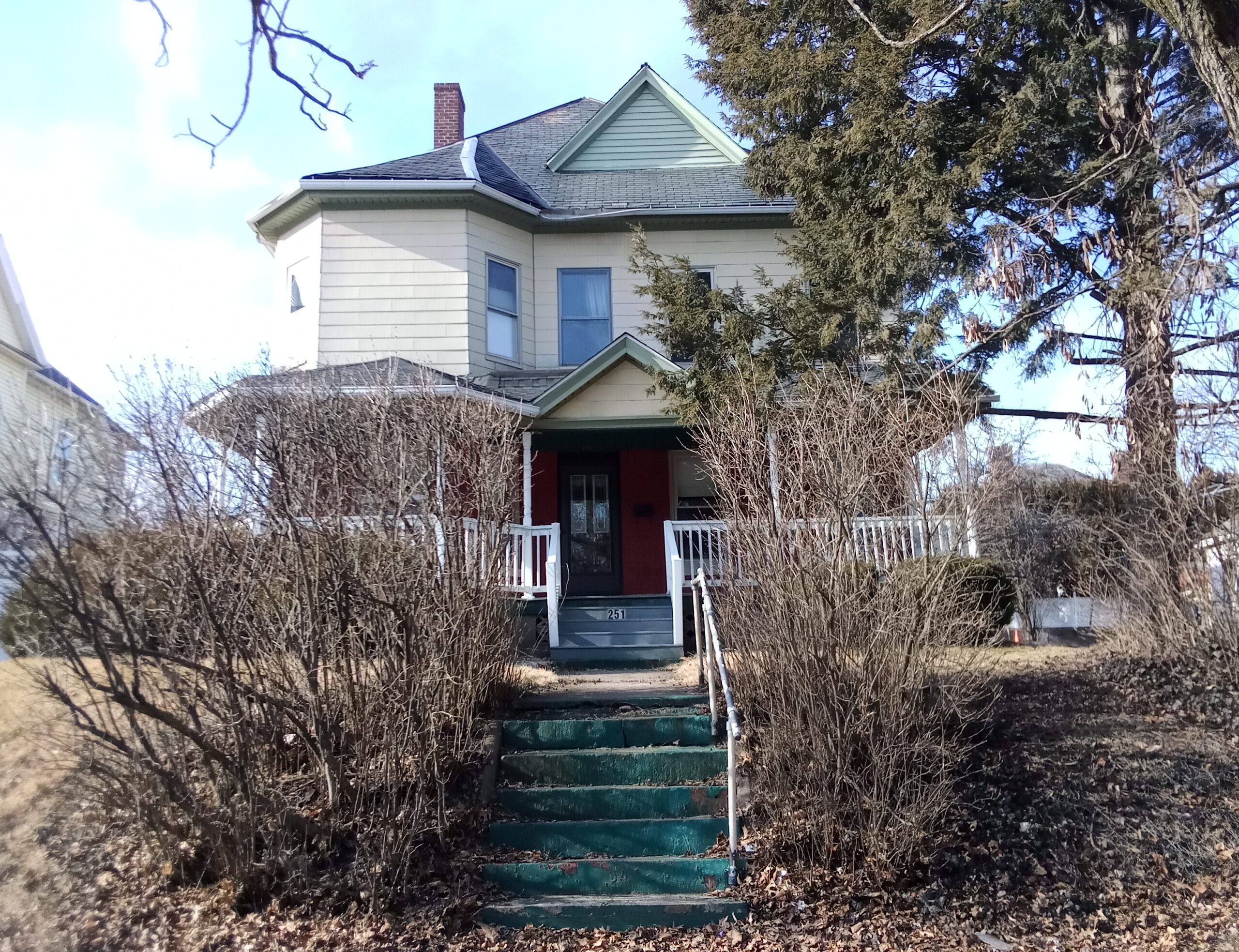 | ||
| 253 | Ettie Richards Lovering School |  | |||
| 244 | Henry Russell | Russell | 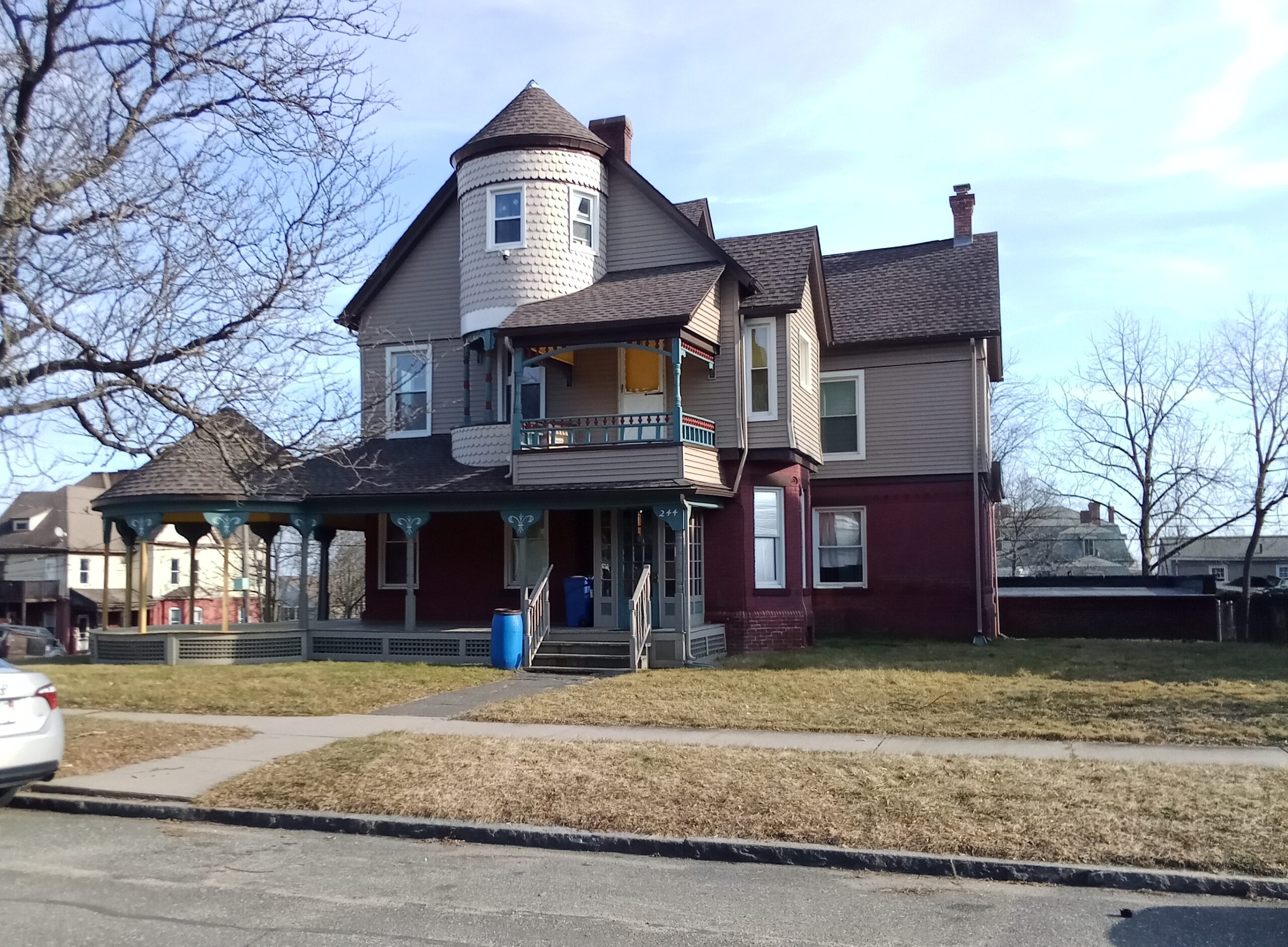 | 1885 | |
| 246 | Amelia Whiting | coal merchant | Edward Whiting | 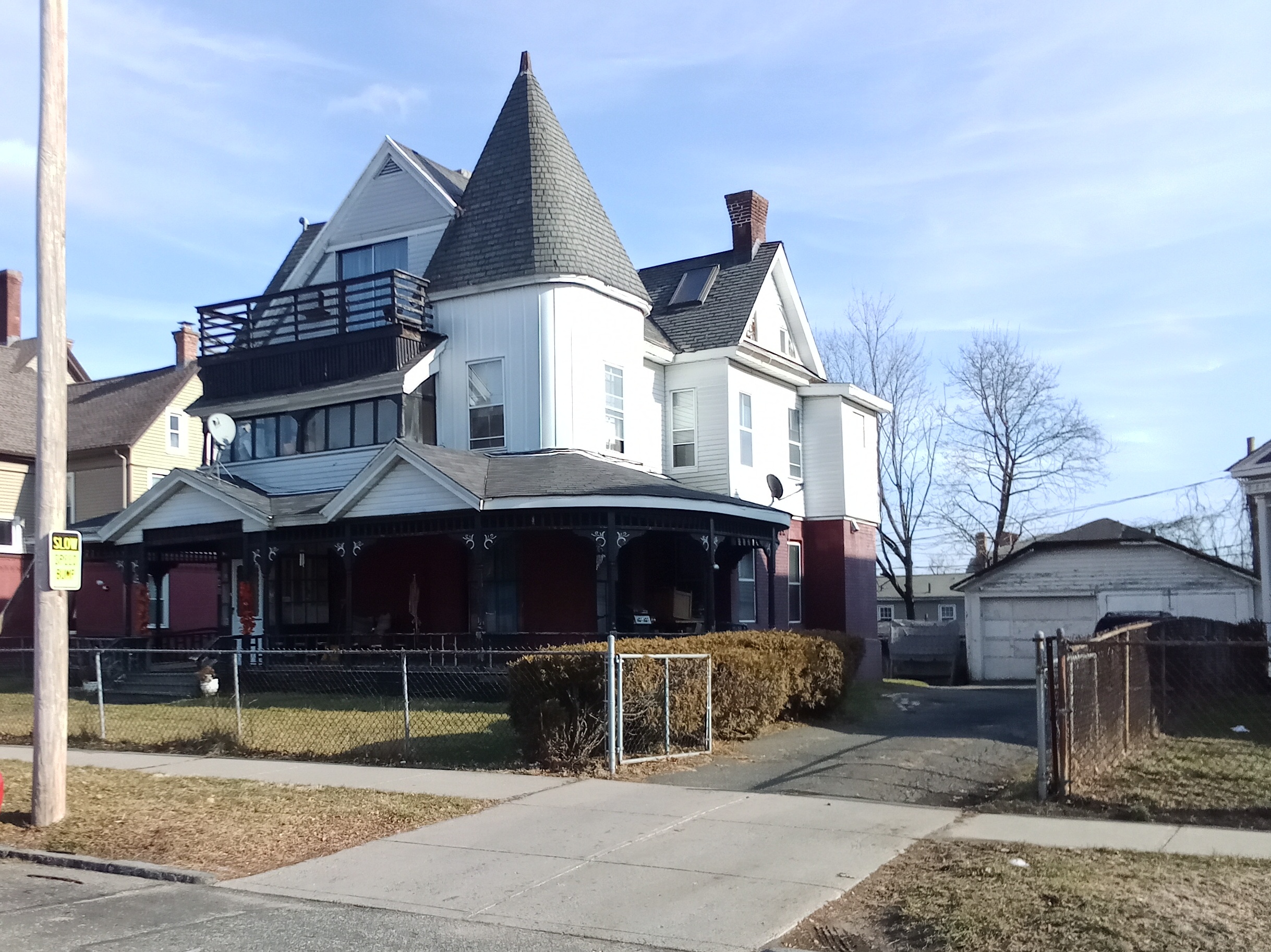 | |
| 248 | Albert Magna | Magna | 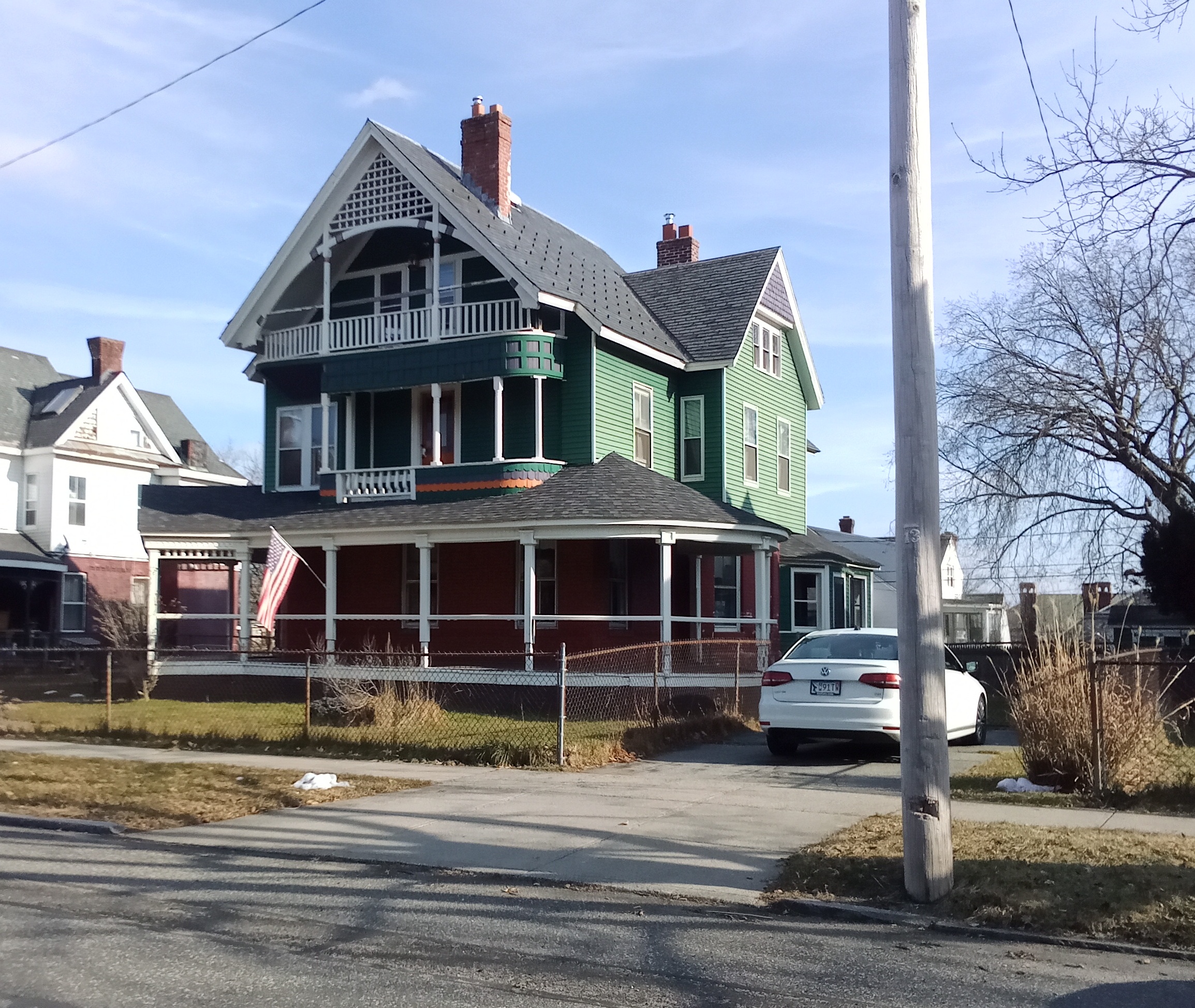 | ||
| 250 | Ettie Richards | John Shea | 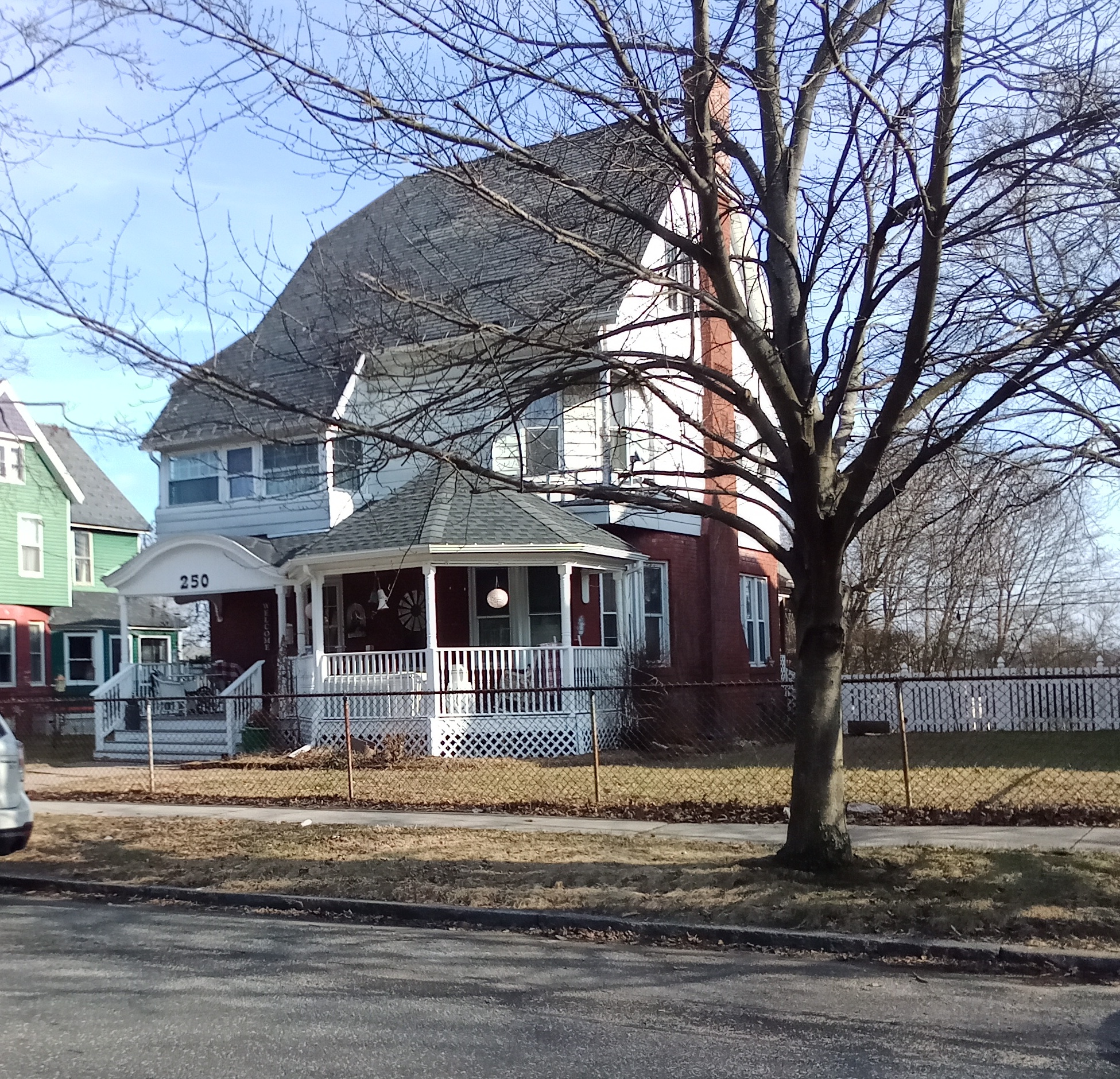 | ||
| 252 | Alice Bennett | lawyer | Alice Bennett | 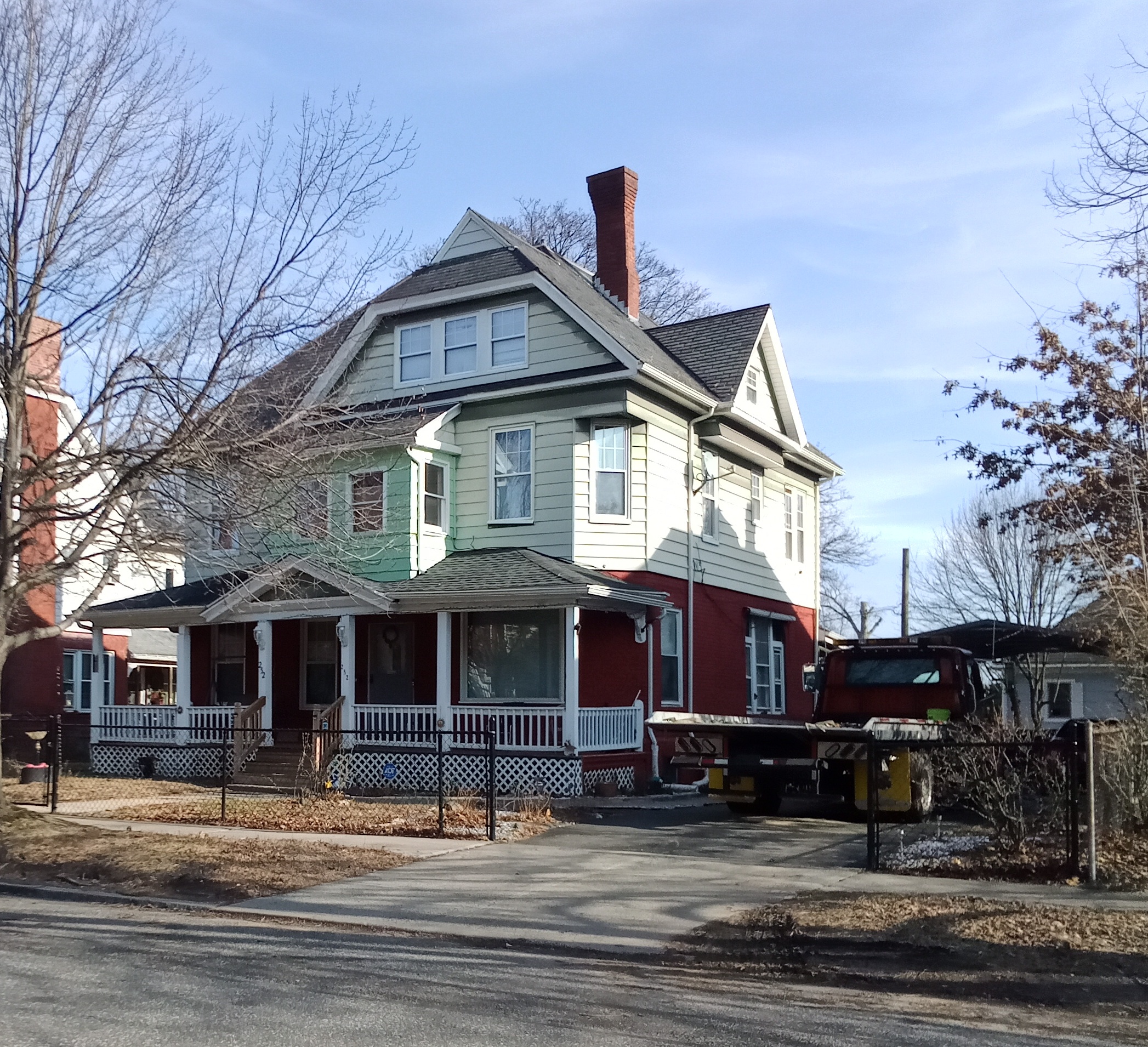 | |
| 254 | Julia Heywood | Charles Heywood | 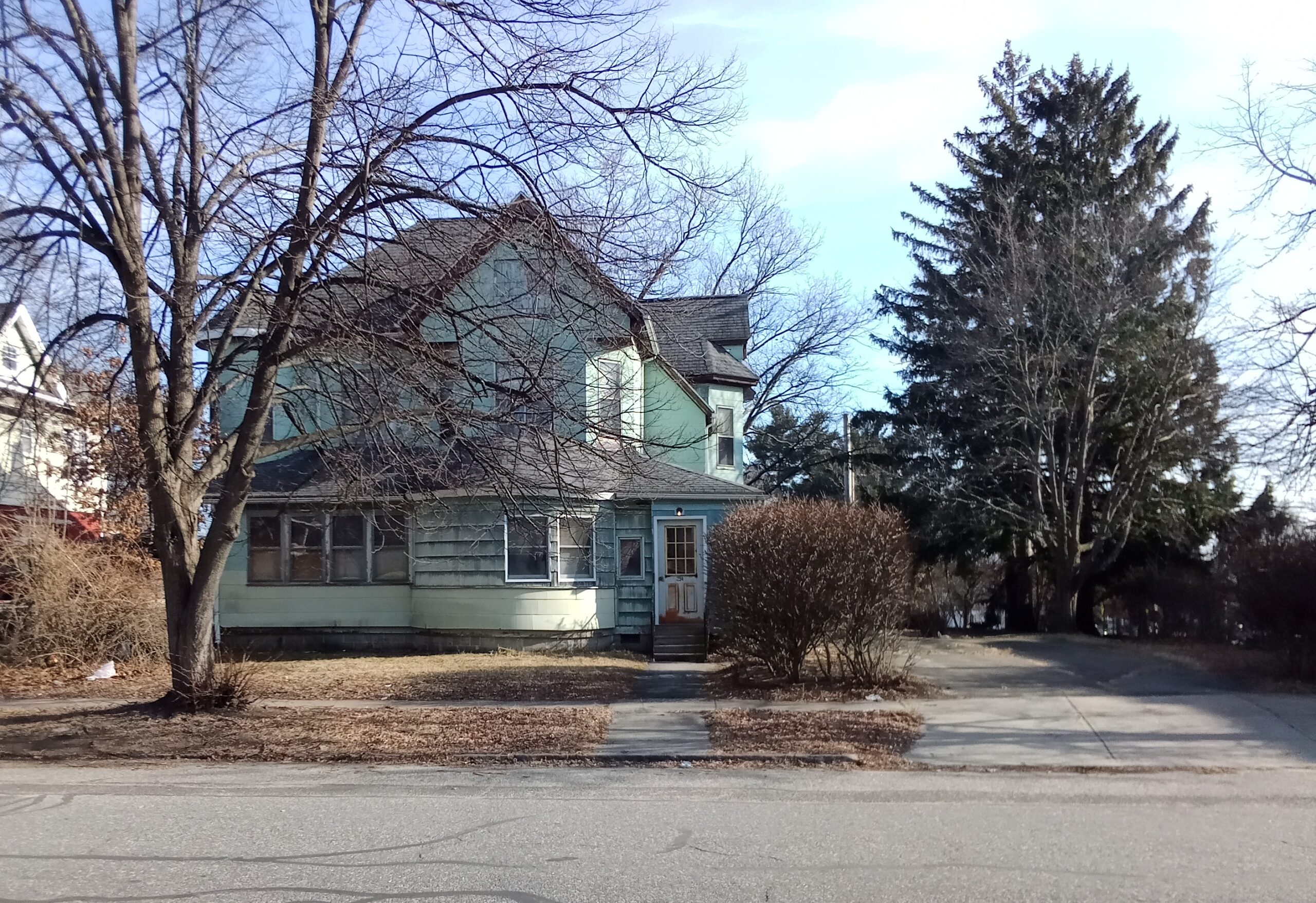 | ||
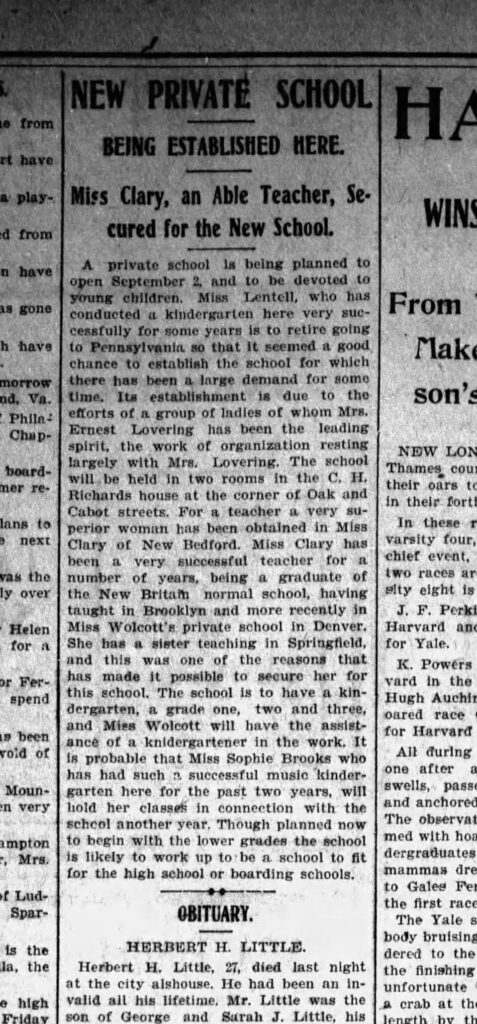
Fairmount Square was at the corner of Oak and Hampshire Streets. There once was a large basin in the middle of this square. See at beautiful picture of it at the LINK.
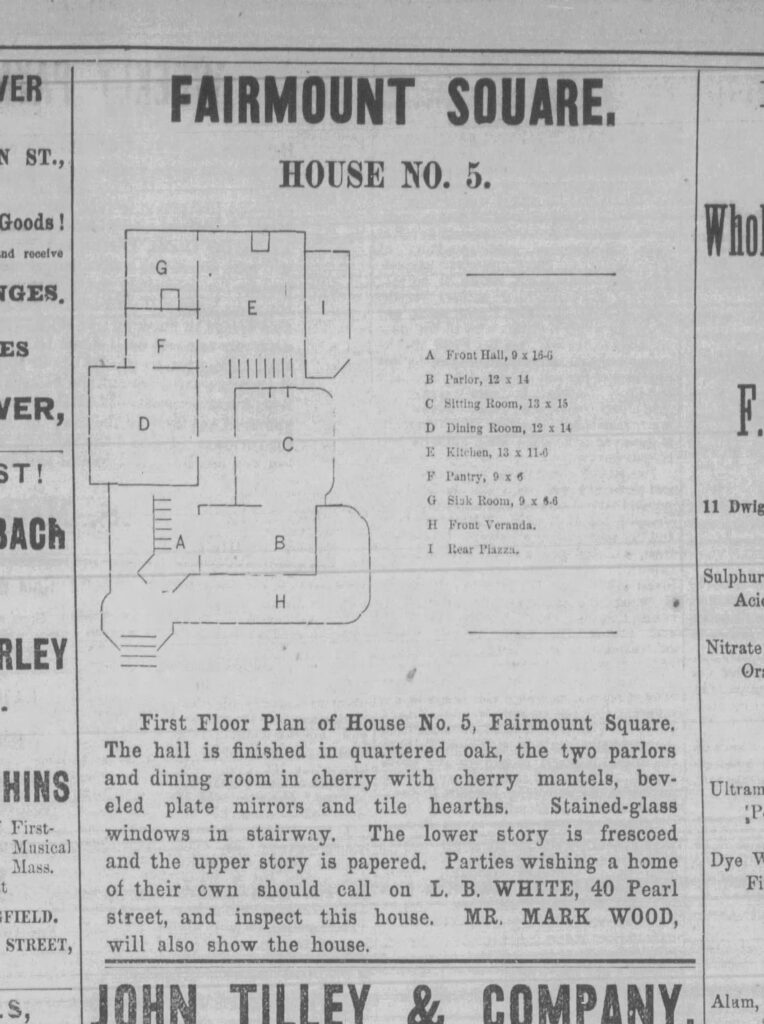
block 8 – Oak Street between Hampshire and Sargeant Streets

The street is anticlimatic after the Fairmount area. Near the end of this city block, you will see the Jean and then the Rosewood on the eastern edge of the Sargeant Street corner. They are very well grade with the change in height of the street.
block 9 – Oak Street between Sargeant and Franklin Streets
In the 1910s this last block of Oak was made and developed as it was not part of the original Oak plan. The only building of note is Noma Electric. This business still exists but not in Holyoke.
Sanborn maps
Sanborn 1889 map A – map B – map C – map D
Sanborn 1895 map A – map B – map C – map D – map E
Sanborn 1915 map A – map B – map C – map D – map E – map F – map G
Sanborn 1949 map A – map B – map C – map D – map E – map F – map G
Sanborn 1956 map A – map B – map C – map D – map E – map F
